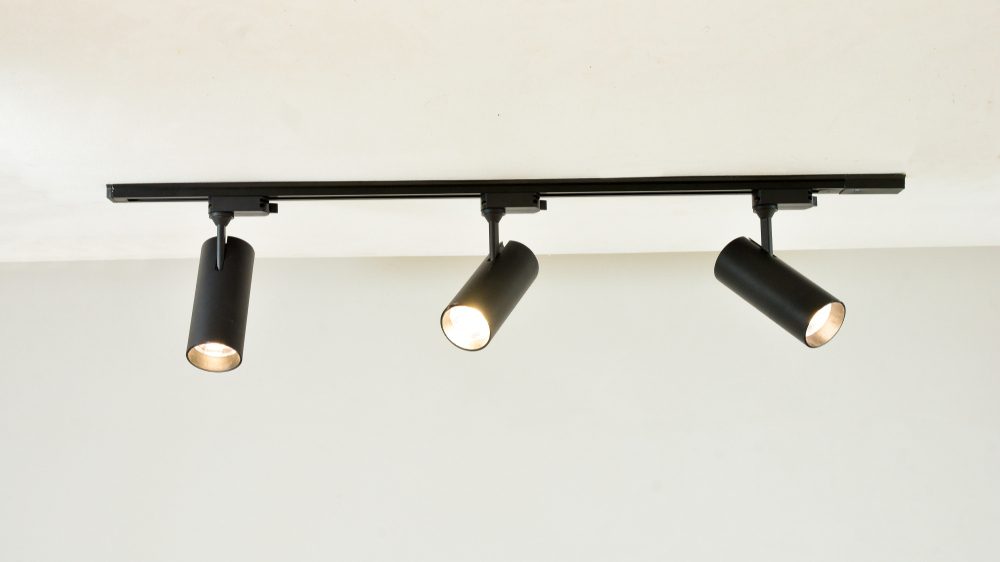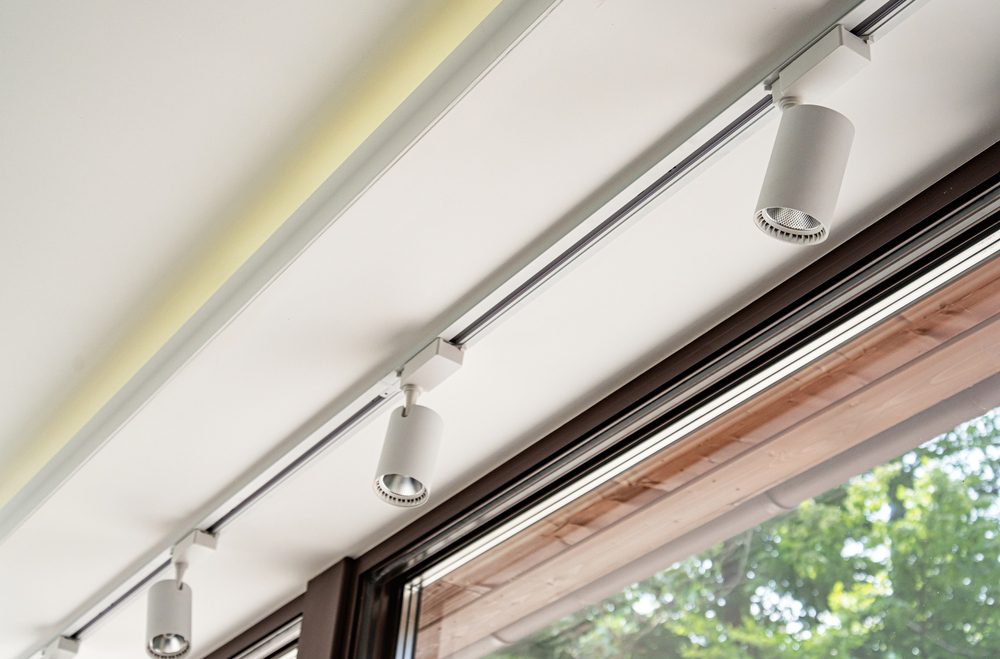
Navigating the dazzling world of lighting options can be overwhelming, especially when searching for the perfect balance between functionality and aesthetics. Track lighting offers a versatile solution for various lighting needs, but understanding its ins and outs can take time and effort due to conflicting information and unique components.
To help you choose a new light fixture for your kitchen or living room, we have created a helpful guide of the different types of track lighting systems. We will also be exploring the advantages and disadvantages of these light fixtures. By breaking down the basics and answering common questions, you will be better equipped to determine if track lighting is ideal for your space.
What is Track Lighting?
Track lighting, as the name suggests, involves a ceiling-mounted track or rail system that supplies electricity to individual light fixtures. Unlike traditional lamps, where the bulb connects directly to the socket, track lighting allows the entire fixture to connect to the electrified track, offering flexibility in positioning and customization.
Available in standard incandescent, low-voltage Halogen/Krypton, CFL, and energy-efficient LED options, track lighting systems enable users to adjust the direction and placement of luminaries without rewiring or searching for additional outlets. The electrified track can be extended or curved to suit various room layouts, making it a versatile and adaptable choice for many lighting needs.
Types of Track Lighting
Track lighting systems offer a versatile and stylish approach to illuminating spaces. The three main types of track lighting include linear, monorail, and cable. Let’s compare the features of these track lighting systems.
1. Linear Track Lighting
Standard linear track lighting, often considered the “traditional” form of track lighting, is characterized by its ease of installation and compatibility with existing electrical circuits. This system features an enclosed, hollow, square-edged bar mounted to the ceiling, with light fixtures secured by inserting and twisting them into the tracks.
The internal exposed electrical conduit runs along the length of the track, resting in designated grooves. When the metal base of the luminary makes contact with these connections, it powers the individual light using the circuit at the end of the track, providing a straightforward and efficient lighting solution.
2. Monorail Lighting
Monorail lighting, distinct from standard linear track lighting, is characterized by its suspension from the ceiling using rods called standoffs. This type of track lighting features flexible and narrow rails. The light fixture can be bent and curved up to 30 degrees, allowing for greater design freedom.
The rail conducts electricity through its exposed metal, typically requiring a transformer to step down the voltage for safe use. Low-voltage electricity is conducted along the rail through metal plates of an insulating connector. Luminaries are then attached directly to the rail, drawing power from it and providing a versatile, customizable lighting solution for various spaces.
Read More: Why Are the Lights in My House Dimming Randomly?
3. Cable Lighting
Cable lighting offers a unique and industrial aesthetic by utilizing sturdy cables and turnbuckles to suspend track heads from the ceiling rather than using bars or boxes. This style is particularly fitting for spaces with exposed ductwork or vaulted ceilings.
The low-voltage conductive cables provide versatility across various architectural styles, making them an ideal choice for areas with limited electrical access at the ceiling level.
With the ability to anchor additional cables from nearby walls or fixtures, cable lighting systems can be suspended from the ceiling, stretched from wall to wall, or adapted in various configurations, creating a unique and flexible lighting solution for diverse spaces.

Benefits of Installing Track Lights
Let’s look at the benefits and possible drawbacks of track lighting.
Easy to Install
One of the critical advantages of track lighting is its ease of installation. Installing track lighting is not more complicated than regular lighting. It just requires careful placement consideration to ensure optimal illumination and aesthetic appeal within a space.
Highlights Features
A significant advantage of track lighting is its ability to highlight specific features within a space effectively. Directional fixtures are particularly useful for spotlighting artwork on a gallery wall or accentuating a piece of furniture while hanging pendants can focus light downward onto surfaces such as a kitchen island or table.
This targeted illumination allows homeowners to showcase the best elements of their house, enhancing its aesthetics and functionality.
Different Styles
A notable advantage of track lighting is the vast array of styles available, allowing homeowners to find a design that complements their decor easily.
This versatility is particularly beneficial in contemporary settings, where track lighting can seamlessly integrate with various design elements and enhance the overall aesthetic of a space. The different types of track lighting provides ample opportunity for customization, ensuring a tailored lighting solution for any interior.
Read More: Creative Under-Cabinet Lighting Ideas for Your Kitchen
Drawbacks of Installing Track Lights
Poor Overall Lighting
A disadvantage of track lighting is its potential for inadequate overall illumination. When selecting lighting options, homeowners should consider the light source, bulb type, room usage, and desired ambiance, opting for track lighting only when suitable.
Track lighting is best used to accentuate specific features within a room rather than providing general lighting for the entire space. While it can be effective in kitchens and living rooms with auxiliary light sources, there may be better choices for bathrooms or smaller areas where comprehensive illumination is essential for functionality and comfort.
Fixtures Can Be Expensive
A notable disadvantage of track lighting is its potential expense compared to other lighting options that connect directly to an electrical box. The cost of track lighting can be influenced by factors such as the type of fixture and the length of the track.
While many tracks with directional fixtures may range between $50 and $100 for a nearly 4-foot track, longer tracks with additional fixtures could exceed $500, especially for specialized fixtures.

Lighting Installation and Replacement Services
The licensed technicians at Casteel offer reliable lighting installation services for both indoor and outdoor spaces. Our team of skilled electricians in Athens, GA can help homeowners determine the ideal electrical services for their track lighting needs.
By trusting our dependable services, you can ensure that your lighting solutions cater to both functionality and aesthetics, ultimately elevating the overall appeal of your living spaces. Give our team of electricians a call at (770) 852-8504 to receive assistance choosing new track lights for your home.



